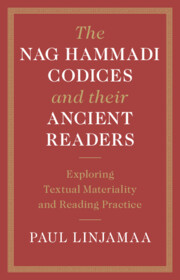The Nag Hammadi Codices and their Ancient Readers
Since their discovery in 1945, the Nag Hammadi codices have generated questions and scholarly debate as to their date and function. Paul Linjamaa contributes to the discussion by offering insights into previously uncharted aspects pertinent to the materiality of the manuscripts. He explores the practical implementation of the texts in their ancient setting through analyses of codicological aspects, paratextual elements and scribal features. Linjamaa’s research supports the hypothesis that the Nag Hammadi texts had their origins in Pachomian monasticism. He shows how Pachomian monks used the texts for textual edification, spiritual development and pedagogical practices. He also demonstrates that the texts were used for perfecting scribal and editorial practice, and that they were used as protective artefacts containing sacred symbols in the continuous monastic warfare against evil spirits. Linjamaa’s application of new material methods provides clues to the origins and use of ancient texts, and challenges preconceptions about ancient orthodoxy. This title is also available as Open Access on Cambridge Core.
Paul Linjamaa is Associate Professor at the Centre for Theology and Religious Studies at Lund University.



